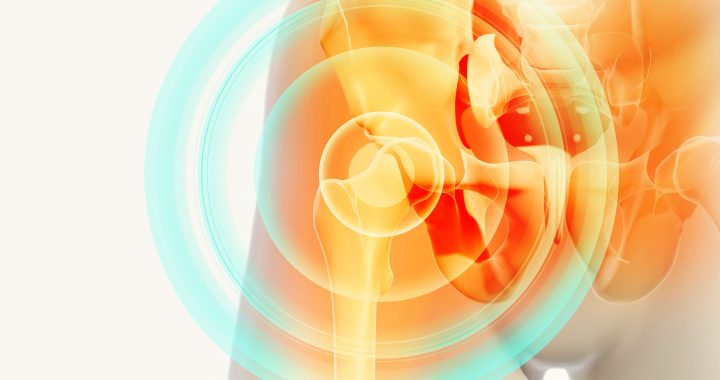Back
Unraveling the Connection: Tight Hips and Pelvic Pain in Men
By Dr. Christine Martirez PT, DPT on 3/27/2024

Did you know our pelvic floor muscles are directly connected to our hip muscles? In the lower body, the hips, pelvic floor, low back, and abdominals all work together to provide stability in sitting, standing, walking, and more. In this blog post, we embark on a journey to understand this relationship, exploring how tight hips can contribute to pelvic pain and how pelvic floor physical therapy serves as a beacon of relief and restoration.
Anatomy Connecting Pelvic Floor to Hips
The Hip-Pelvic Floor Connection:
Several anatomical structures serve as bridges linking the pelvic floor muscles to the hips. These include:Hip Flexors:
The hip flexor muscles, including the iliopsoas and rectus femoris, originate from the lumbar spine and pelvis and insert onto the femur (thigh bone). Tightness or dysfunction in these muscles can affect pelvic alignment and tension in the pelvic floor.Obturator Internus:
The obturator internus muscle forms an integral part of the pelvic floor complex, working in concert with other pelvic floor muscles to provide support and stability to pelvic organs. Beyond its role in the pelvic floor, the obturator internus muscle also plays a significant role in hip joint dynamics. Its attachments to the femur enable it to control hip external rotation and femoroacetabular stability, assisting in activities such as walking, standing, and maintaining balance.Pelvic Ligaments:
Ligaments such as the sacrotuberous and sacrospinous ligaments provide stability to the pelvis and connect it to the hips. Dysfunction in these ligaments can impact pelvic floor function and contribute to pelvic pain.Fascial Connections:
Fascia, the connective tissue that surrounds muscles and organs, forms continuous connections between the pelvic floor and hip muscles. Dysfunction or restrictions in fascial planes can transmit tension and affect the coordination of pelvic and hip movements.
The Intersection of Tight Hips and Pelvic Pain
Understanding Tight Hips:
Tight hips are a common modern-day affliction, often stemming from prolonged periods of sitting, lack of mobility exercises, or imbalanced muscular development. When hip flexors, including the iliopsoas and rectus femoris, become tight, they can pull the pelvis forward, altering its alignment and placing strain on the surrounding structures.The Ripple Effect on the Pelvic Floor:
As the pelvis tilts anteriorly due to tight hips, it can lead to increased tension and dysfunction in the pelvic floor muscles. This altered alignment may exacerbate existing pelvic floor issues or contribute to the development of new ones, such as pelvic pain, urinary dysfunction, or sexual discomfort.How Pelvic Floor Physical Therapy Can Help
Comprehensive Assessment:
Pelvic floor physical therapists conduct a thorough evaluation to identify the underlying causes of pelvic pain, including tight hips. They assess posture, muscle strength, range of motion, and pelvic floor function to develop a personalized treatment plan.Targeted Stretching and Mobility Exercises:
Pelvic floor therapists incorporate targeted stretching and mobility exercises to address tight hips and restore pelvic alignment. These exercises focus on lengthening tight hip musculature, releasing tension in the pelvic floor muscles, and promoting proper pelvic positioning.Manual Therapy Techniques:
Manual therapy techniques, such as myofascial release or trigger point therapy, may be utilized to release tension and improve flexibility in the hip muscles and surrounding tissues. This hands-on approach helps alleviate pain and restore optimal function.Pelvic Floor Strengthening:
In addition to addressing tightness, pelvic floor physical therapy includes exercises to strengthen the pelvic floor muscles. Strengthening these muscles helps improve stability, support, and overall pelvic health, complementing the effects of hip mobility work.Education and Self-Care Strategies:
Pelvic floor therapists provide education on posture, ergonomics, and lifestyle modifications to prevent recurrence of tight hips and pelvic pain. They empower individuals with self-care strategies, including at-home exercises and relaxation techniques, to promote long-term pelvic health.Conclusion
The relationship between tight hips and pelvic pain in men underscores the interconnectedness of the body's musculoskeletal system. By addressing tightness in the hips through targeted interventions, pelvic floor physical therapy offers a holistic approach to alleviating pelvic pain and restoring function. Through comprehensive assessment, targeted exercises, manual therapy techniques, and education, pelvic floor therapists empower individuals to reclaim control over their pelvic health and rediscover a life free from discomfort. Remember, prioritizing pelvic health is a journey of self-care and restoration that yields profound benefits for overall well-being.
Read More:
How Chronic Pelvic Congestion in Men Contributes to Prostatitis By Shannon Strauch, PTA, STMT-1 on 12/11/2024 How lymphatic issues can cause symptoms of prostatitis Prostatitis and Tight Pelvic Floor Muscles: A Comprehensive Guide By Shannon Strauch, PTA, STMT-1 on 12/10/2024 How a tight pelvic floor can be the reason for prostatitis symptoms
Are you ready to live pain free?
Request An Appointment